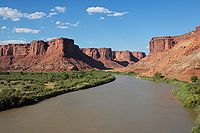
A giant nektobenthic radiodont from the Burgess Shale and the significance of hurdiid carapace diversity
Sign Up to like & getrecommendations! Published in 2021 at "Royal Society Open Science"
DOI: 10.1098/rsos.210664
Abstract: Radiodonts, stem-group euarthropods that evolved during the Cambrian explosion, were among the largest and most diversified lower palaeozoic predators. These animals were widespread geographically, occupying a variety of ecological niches, from benthic foragers to nektonic… read more here.
Keywords: diversity; hurdiid; burgess shale; radiodont ... See more keywords

First record of growth patterns in a Cambrian annelid
Sign Up to like & getrecommendations! Published in 2023 at "Royal Society Open Science"
DOI: 10.1098/rsos.221400
Abstract: Early annelid evolution is mostly known from 13 described species from Cambrian Burgess Shale-type Lagerstätten. We introduce a new exceptionally well-preserved polychaete, Ursactis comosa gen. et sp. nov., from the Burgess Shale (Wuliuan Stage). This… read more here.
Keywords: growth patterns; first record; growth; record growth ... See more keywords

Proclivity of nervous system preservation in Cambrian Burgess Shale-type deposits
Sign Up to like & getrecommendations! Published in 2019 at "Proceedings of the Royal Society B: Biological Sciences"
DOI: 10.1098/rspb.2019.2370
Abstract: Recent investigations on neurological tissues preserved in Cambrian fossils have clarified the phylogenetic affinities and head segmentation in pivotal members of stem-group Euarthropoda. However, palaeoneuroanatomical features are often incomplete or described from single exceptional specimens,… read more here.
Keywords: nervous system; shale type; burgess shale; cambrian burgess ... See more keywords

Evidence for microbially mediated silver enrichment in a middle Cambrian Burgess Shale-type deposit, Mackenzie Mountains, northwestern Canada
Sign Up to like & getrecommendations! Published in 2021 at "Canadian Journal of Earth Sciences"
DOI: 10.1139/cjes-2021-0035
Abstract: The Selwyn basin and Mackenzie platform of northwestern Canada house an array of mineral deposits and prospects that are rich in silver, including Neoproterozoic red-bed or Kupferschiefer-type Cu and lower Paleozoic sedimentary exhalative (SEDEX) and… read more here.
Keywords: mackenzie; shale type; burgess shale; middle cambrian ... See more keywords